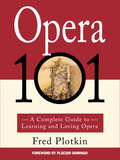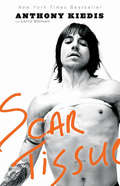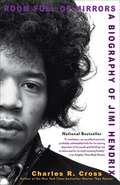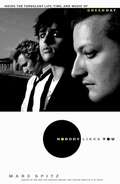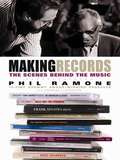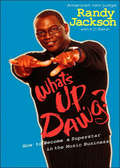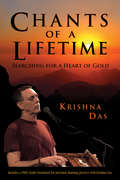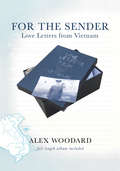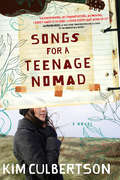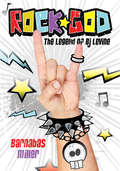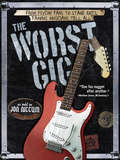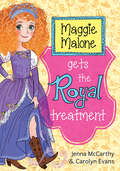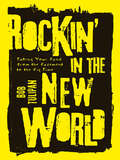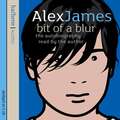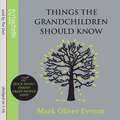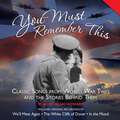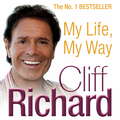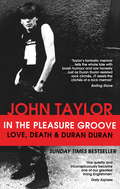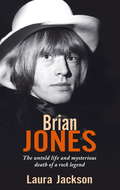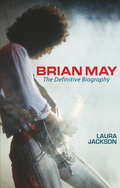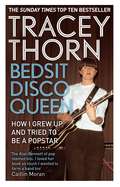- Table View
- List View
Opera 101: A Complete Guide to Learning and Loving Opera
by Fred PlotkinOpera is the fastest growing of all the performing arts, attracting audiences of all ages who are enthralled by the gorgeous music, vivid drama, and magnificent production values. If you've decided that the time has finally come to learn about opera and discover for yourself what it is about opera that sends your normally reserved friends into states of ecstatic abandon, this is the book for you. Opera 101 is recognized as the standard text in English for anyone who wants to become an opera lover--a clear, friendly, and truly complete handbook to learning how to listen to opera, whether on the radio, on recordings, or live at the opera house. Fred Plotkin, an internationally respected writer and teacher about opera who for many years was performance manager of the Metropolitan Opera, introduces the reader (whatever his or her level of musical knowledge) to all the elements that make up opera, including: A brief, entertaining history of opera; An explanation of key operatic concepts, from vocal types to musical conventions; Hints on the best way to approach the first opera you attend and how to best understand what is happening both offstage and on; Lists of recommended books and recordings, and the most complete traveler's guide to opera houses around the world. The major part of Opera 101 is devoted to an almost minute-by-minute analysis of eleven key operas, ranging from Verdi's thunderous masterpiece Rigoletto and Puccini's electrifying Tosca through works by Mozart, Donizetti, Rossini, Offenbach, Tchaikovsky, and Wagner, to the psychological complexities of Richard Strauss's Elektra. Once you have completed Opera 101, you will be prepared to see and hear any opera you encounter, thanks to this book's unprecedentedly detailed and enjoyable method of revealing the riches of opera.
Scar Tissue: Der Sänger Der Red Hot Chili Peppers - Die Autobiographie
by Larry Sloman Anthony KiedisThe New York Times bestseller by one of rock's most provocative figuresScar Tissue is Anthony Kiedis's searingly honest memoir of a life spent in the fast lane. In 1983, four self-described "knuckleheads" burst out of the mosh-pitted mosaic of the neo-punk rock scene in L.A. with their own unique brand of cosmic hardcore mayhem funk. Over twenty years later, the Red Hot Chili Peppers, against all odds, have become one of the most successful bands in the world. Though the band has gone through many incarnations, Anthony Kiedis, the group's lyricist and dynamic lead singer, has been there for the whole roller-coaster ride.Whether he's recollecting the influence of the beautiful, strong women who have been his muses, or retracing a journey that has included appearances as diverse as a performance before half a million people at Woodstock or an audience of one at the humble compound of the exiled Dalai Lama, Kiedis shares a compelling story about the price of success and excess. Scar Tissue is a story of dedication and debauchery, of intrigue and integrity, of recklessness and redemption--a story that could only have come out of the world of rock.
Room Full of Mirrors: A Biography of Jimi Hendrix
by Charles R. CrossNow in paperback, the national bestselling biography of American musical icon Jimi HendrixIt has been more than thirty-five years since Jimi Hendrix died, but his music and spirit are still very much alive for his fans everywhere. Charles R. Cross vividly recounts the life of Hendrix, from his difficult childhood and adolescence in Seattle through his incredible rise to celebrity in London's swinging sixties. It is the story of an outrageous life--with legendary tales of sex, drugs, and excess--while it also reveals a man who struggled to accept his role as idol and who privately craved the kind of normal family life he never had. Using never-before-seen documents and private letters, and based on hundreds of interviews with those who knew Hendrix--many of whom had never before agreed to be interviewed--Room Full of Mirrors unlocks the vast mystery of one of music's most enduring legends.
Nobody Likes You: Inside the Turbulent Life, Times, and Music of Green Day
by Marc SpitzThe full story of the rise and spectacular comeback of the band hailed as the saviors of punk rock and the next U2It's hard to believe that in early 2004 Green Day was considered over--the band was still together, but they were dismissed as a strictly 90s phenomenon, incapable of re-creating the success of their groundbreaking album Dookie. Then American Idiot debuted at #1 on the Billboard charts, stayed on the charts for nearly 18 months, and went on to sell more than four million records and to win Record of the Year (for "Boulevard of Broken Dreams") at this year's Grammy's.Combining unique access to Green Day with a seasoned journalist's nose for a great story, Marc Spitz gives the complete account of the band, from their earliest days to their most recent explosion of popularity and critical acclaim. Foremost, Nobody Likes You is a story of friendship and the transporting power of playing very loud music. It is the story of how high school dropout Billie Joe Armstrong came to write song lyrics that inflamed the political conscience of fans in a way that two Yale graduates couldn't. Green Day's story--from rise, to fall, to rise again--has never before been fully told.
Making Records: The Scenes Behind the Music
by Phil RamoneSinatra. Streisand. Dylan. Pavarotti. McCartney. Sting. Madonna. What do these musicians have in common besides their super-stardom? They have all worked with legendary music producer Phil Ramone.For almost five decades, Phil Ramone has been a force in the music industry. He has produced records and collaborated with almost every major talent in the business. There is a craft to making records, and Phil has spent his life mastering it. For the first time ever, he shares the secrets of his trade.Making Records is a fascinating look "behind the glass" of a recording studio. From Phil's exhilarating early days recording jazz and commercial jingles at A&R, to his first studio, and eventual legendary producer status, Phil allows you to sit in on the sessions that created some of the most memorable music of the 20th century--including Frank Sinatra's Duets album, Bob Dylan's Blood on the Tracks, Ray Charles's Genius Loves Company and Paul Simon's Still Crazy After All These Years.In addition to being a ringside seat for contemporary popular music history, Making Records is an unprecedented tutorial on the magic behind what music producers and engineers do. In these pages, Phil offers a rare peek inside the way music is made . . . illuminating the creative thought processes behind some of the most influential sessions in music history.This is a book about the art that is making records--the way it began, the way it is now, and everything in between.
Poker Face: The Rise and Rise of Lady Gaga
by Maureen CallahanIn just a two-year span, Stefani Germanotta, a struggling performer in New York's Lower East Side burlesque scene, has become the global demographic-smashing pop icon known as Lady Gaga. She is a once-in-a-decade artist, a gifted singer, composer, designer, and performance artist who mixes high and low culture, the avant-garde with the accessible, authenticity with artifice.Who is Lady Gaga? She is a twenty-five-year-old woman whose stage mantra--"I'm a free bitch!"--is the polar opposite of who she is offstage: isolated, insecure, and unable to be alone. She is an outrÉ artist who wanted to be a sensitive singer-songwriter. She is a woman who says no man can ever compete with her career, but who goes back and forth with the ex-boyfriend who said she was too ambitious. She claims not to care what people think, but spends her downtime online, reading what people have to say about her. She claims to be a con artist and utterly authentic. She is never less than compelling.Based on more than fifty original interviews with friends, employees, rivals, and music industry veterans, Poker Face is the first in-depth biography of the extraordinary cultural phenomenon that is Lady Gaga.
What's Up, Dawg?: How to Become a Superstar in the Music Business
by Randy Jackson K. C. BakerEverything you need to know to make it big and take it all the way to the top, from the Grammy Award-winning producer, songwriter, musician, record exec, and American Idol judge.So you wanna be a superstar? You want the fans? The glitz? The glamour? The money? The bling? American Idol judge Randy Jackson has been the man behind the star-making machine for the past 25 years, producing, recording, managing and performing with the biggest names in the music industry, including *NSYNC, Madonna, Mariah Carey, Whitney Houston, Celine Dion, Elton John,Aretha Franklin, Bruce Springsteen, Bob Dylan, Destiny's Child, Bon Jovi and Journey, among many others. If anybody knows the music biz, it's Randy.Now for the first time, Randy reveals his secrets--and those of the industry's top experts--to making it big in the music industry. With his cool, hip, straightforward style, he's going to break it all down for you in layman's terms. He's going to help you find your musical style and how it can mean the difference between scoring a record deal--or going nowhere. He'll give you the 411 on how to land gigs, network with the industry's power players, make a blazing hot demo and snag the all-important record deal--all while staying true to yourself.So if you think you have what it takes to be the next Beyonce, Justin Timberlake or 50 Cent, or even the next American Idol, read What's Up, Dawg and let's see if you got What's up!
Chants of a Lifetime: Searching For A Heart Of Gold
by Krishna DasChants of a Lifetime offers an intimate collection of stories, teachings, and insights from Krishna Das, who has been called "the chant master of American yoga" by the New York Times. Since 1994, the sound of his voice singing traditional Indian chants with a Western flavor has brought the spiritual experience of chanting to audiences all over the world. He has previously shared some of his spiritual journey through talks and workshops, but now he offers a unique book-with-audio download combination that explores his fascinating path and creates an opportunity for just about anyone to experience chanting in a unique and special way. Chants of a Lifetime includes photos from Krishna Das’s years in India and also from his life as a kirtan leader—and the audio that is offered exclusively in the book consists of a number of "private" chanting sessions with the author. Instead of just being performances of chants for listening, the recordings make it seem as if Krishna Das himself is present for a one-on-one chanting session. The idea is for the listener to explore his or her own practice of chanting and develop a deepening connection with the entire chanting experience.
For the Sender: Love Letters From Vietnam
by Alex WoodardDear Sergeant Fuller,You won't know me for another two years,but I am your daughter....So begins a letter sent decades into the past, from a daughter searching for answers to a soldier serving in war-torn Vietnam, in this true story of service and sacrifice, love and redemption, and the power of forgiveness.A box with Love Letters from Vietnam etched on the lid waits buried in a closet, holding scrawled thoughts written on Air Force stationery from a passionate yet deeply flawed soldier stationed outside Da Nang to his young wife in east Texas. Years pass before a fateful, deadly winter night leads the soldier's daughter, Jennifer, to open the box, read the letters, and answer her father back in time. She tucks her letters into a package with no address, because she no longer knows where to send them.Until she is sitting in a theater in Austin, Texas, at a performance by singer-songwriter Alex Woodard and hears him talk about writing songs inspired by letters. Her remarkable correspondence with her father takes Woodard on his first steps into the dichotomy between dark and light, as he imagines himself as Sergeant Fuller in Vietnam and begins to write songs sung from Fuller's heart.Woodard's quest to learn more about the man and the war he fights both in Vietnam and back at home evolves into an extraordinary journey, propelled by an album included with the book that features Woodard as Sergeant Fuller and his friend Molly Jenson as Jennifer. Their voices carry the songs inspired by these beautiful, raw, revealing love letters not only sent from Vietnam, but as the story unfolds, beyond.
Songs for a Teenage Nomad
by Kim Culbertson"So engrossing, so transporting, so moving, I didn't want it to end! A beautiful, lyrical read-I loved every last word of it!" -Alyson Noeuml;l, #1 New York Times Bestselling Author of The Immortals series What is the soundtrack of your life? After living in twelve places in eight years, Calle Smith finds herself in Andreas Bay, California, at the start of ninth grade. Another new home, another new school. . . Calle knows better than to put down roots. Her song journal keeps her moving to her own soundtrack, bouncing through a world best kept at a distance. Yet before she knows it, friends creep in-as does an unlikely boy with a secret. Calle is torn over what may be her first chance at love. With all that she's hiding and all that she wants, can she find something lasting beyond music? And will she ever discover why she and her mother have been running in the first place? "Songs for a Teenage Nomad will send you searching for songs with meaning for the major events of your own life. " -Cindy Hudson, author of Book by Book: The Complete Guide to Creating Mother-Daughter Book Clubs. "The best kind of song takes you on a roller coaster ride of emotions. It makes you think. You find yourself humming and pondering it for days. Songs for a Teenage Nomad does the book version of this. It's an unforgettable story that music lovers in particular will appreciate, but every teenager trying to find their place in the world should read. " -Stephanie Kuehnert, author of I Wanna Be Your Joey Ramone and Ballads of Suburbia
Rock God: The Legend of BJ Levine
by Barnabas MillerDear Sammy, The truth is that the first 13 years of my lif ebefore I met you-have been SUPER BORING. My life didn't really start until two Weeks ago. That Was the day I decided to become a full-on, fire-breathing MEGALORD OF RRRRROCK. I mean, just because I have absolutely no musical ability is no reason to give up on my destiny. You see, I found this book that's going to turn me into a ROCK GOD-no talent required! Now all I have to do is survive long enough to read it. Yours in Rock, B.J. Levine
The Worst Gig
by Jon Niccum"WORST GIG is Music Appreciation 225, taught by that cool professor everyone wanted to have beers with after class. One fun nugget after another. It was harder to close than my Twitter app."--Matthew James, McSweeney's "Tawdry tales of concert catastrophes!"--Buzzfeed "Musicians' 'Worst Gig' makes for best read ever."--Salon What is the worst show you've ever played? Sometimes the worst shows inspire the best stories. After hundreds of interviews with national headliners and beloved indie acts alike, entertainment journalist Jon Niccum has crafted a collection that chronicles the most embarrassing, most hilarious and most insane live show moments ever. THE WORST GIG features outrageous stories from stars such as Wilco, Def Leppard, Tenacious D, Rush, John Mayer, and The Sex Pistols. Be it nature's wrath, equipment breakdowns or even military intervention, get the wild scoop on what really happened, straight from the artists themselves.
Maggie Malone Gets the Royal Treatment
by Carolyn Evans Jenna MccarthyWalking a mile in someone else's shoes can be a royal pain Everyday is Freaky Friday for Maggie Malone and her Mostly Magical Boots. Whenever she slips on the MMBs, Maggie gets to be whomever she wants for a whole day. And whose life could be more fun to try on than the glamorous Princess Wilhelmina of Wincastle's? Even better, Wilhelmina is a bridesmaid in the Royal Wedding of the Century! But even pampered princesses have whopper-sized problems-and hers is an evil archenemy named Penelope. Will she survive Penelope's tricks or will the whole wedding turn into a royal disaster?
Rockin' in the New World: Taking Your Band from the Basement to the Big Time
by Bob TulipanPart field guide, part artistic coaching session, this rockin book by a seasoned insider explains the ins and outs of the music industry in plain English. Bob Tulipan-who has worked with such bands as The Talking Heads and The Police-shares his expertise to help musicians protect both their art and their interests. Practical, accessible, and filled with engaging anecdotes, it addresses common hurdles that every band faces on the road to success.
Bit Of A Blur: The Autobiography
by Alex JamesFor Alex James, music had always been a door to a more exciting life: a way to travel, meet new people and, hopefully, pick up girls. But as bass player of Blur - one of the most successful British bands of all time - his journey was more exciting and extreme than he could ever have predicted. Success catapulted him from a slug-infested squat in Camberwell to a world of private jets and world-class restaurants. As 'the second drunkest member of the world's drunkest band' life was always chaotic, but Alex James retained a boundless enthusiasm and curiosity at odds with his hedonistic lifestyle. From nights in the Groucho with Damien Hirst, to dancing to Sister Sledge with Bjork, to being bitten on the nose by the lead singer of Iron Maiden, he offers a fascinating and hilarious insight into the world of celebrity. At its heart, however, A BIT OF A BLUR is the picaresque tale of one man's search to find meaning and happiness in an increasingly surreal world. Pleasingly unrepentant but nonetheless a reformed man, Alex James is the perfect chronicler of his generation - witty, frank and brimming with joie de vivre. A BIT OF A BLUR is as charming, funny and deliciously disreputable as its author.
Things The Grandchildren Should Know
by dba E Mark Oliver EverettMark Oliver Everett's upbringing was 'ridiculous, sometimes tragic and always unsteady'. His father - a quantum mechanic who worked for the Pentagon - was a genius who had corresponded with Einstein aged 13. He rarely spoke, and following his own miserable childhood had eccentric ideas of how children should be brought up. Mark - known as 'E' - and his older sister Liz were raised in a house with no rules, with parents who had 'a kind of seventies swinging marriage'. Lacking any real sense of authority, E had to raise himself, not always with the greatest success. His love of music helped pull him through, and by his early 20s he was on the brink of stardom with his first album - Beautiful Freak. But then tragedy struck - having already lost his father to a heart attack, his sister and mother both died in short succession - Liz from an overdose, and his mother from cancer. It was the kind of brutal loss that could destroy someone, but somehow E survived, and channelled his experiences into his music. In THINGS THE GRANDCHILDREN SHOULD KNOW he tells his story - one that is surprisingly full of hope, humour and wry wisdom.
You Must Remember This: Classic Songs from World War Two and the Stories Behind Them
by Maurice Sellar Steven SeidenbergRemembering songs from the radio, from dance bands and music halls, from the popular films of the period, and from the ENSA tours that took British entertainers to the troops, this audiobook recaptures the spirit of the World War II years through the music and songs. It includes information about the legendary entertainers of the era, along with 23 full-length original recordings of the songs they made famous. These songs, moving and inspiring in equal measure, allow a glimpse into a world at war and the heroic effort of the British people that eventually brought victory and peace.Songs include: We'll Meet Again, The White Cliffs of Dover, In The Mood and Lili Marlene.
My Life, My Way
by Cliff RichardSir Cliff Richard OBE is the biggest-selling artist of all time, selling over 250 million records around the world since he burst onto the music scene in 1958. But how has he kept his appeal all these years? In a world fuelled by drink, sex and drugs, he is perennially attractive without any of those things that keep other singers' profiles high. Now, working with the highly acclaimed biographer and journalist, Penny Junor, Cliff is going to talk freely and frankly about what it is like to be Cliff. Inspirational, hugely talented, a much-loved household name, his story is extraordinary.
In The Pleasure Groove: Love, Death and Duran Duran
by John TaylorWith Duran Duran, John Taylor has created some of the greatest songs of our time. From the disco dazzle of debut single 'Planet Earth' right up to their latest number one album All You Need is Now, Duran Duran has always had the power to sweep the world onto its feet.It's been a ride - and for John in particular, the ride has been wild, thrilling... and dangerous. Now, for the first time, he tells his incredible story - a tale of dreams fulfilled, lessons learned and demons conquered. A shy only child, Nigel John Taylor wasn't an obvious candidate for pop stardom and frenzied girl panic. But when he ditched his first name and picked up a bass guitar, everything changed. John formed Duran Duran with his friend Nick Rhodes in the spring of 1978, and they were soon joined by Roger Taylor, then Andy Taylor and finally Simon Le Bon. Together they were an immediate, massive global success story, their pictures on millions of walls, every single a worldwide hit. In his frank, compelling autobiography, John recounts the highs - hanging out with icons like Bowie, Warhol and even James Bond; dating Vogue models and driving fast cars - all the while playing hard with the band he loved. But he faced tough battles ahead - troubles that brought him to the brink of self-destruction - before turning his life around.Told with humour, honesty and hard-won wisdom, and packed with exclusive pictures, In the Pleasure Groove is a fascinating, irresistible portrait of a man who danced into the fire... and came through the other side.
Brian Jones: The Untold Life and Mysterious Death of a Rock Legend
by Laura JacksonIn this definitive biography of Brian Jones, Laura Jackson - the first to insist that Jones was murdered and the first to identify his killer - rejects the stereotype of a narcissistic rock star who was doomed to self-destruct. Instead, she spoke to the people who knew him best: his family and friends, girlfriends and confidantes, the musicians and friends who lived and worked with him right up until his death in 1969. Jones emerges as a man of immense talent, energy and humour, but crippled by insecurities and shyness - a portrayal greatly at odds with the sordid rumours that plagued him throughout his life, which continue to this day. Jackson provides new testimony on the rivalries within the Rolling Stones and the bitter final split, together with telling details from the pathology and coroner's reports, to tell the story behind the headlines and get to the heart of the mysterious death of Brian Jones.
Brian Jones: The untold life and mysterious death of a rock legend
by Laura JacksonIn this definitive biography of Brian Jones, Laura Jackson - the first to insist that Jones was murdered and the first to identify his killer - rejects the stereotype of a narcissistic rock star who was doomed to self-destruct. Instead, she spoke to the people who knew him best: his family and friends, girlfriends and confidantes, the musicians and friends who lived and worked with him right up until his death in 1969. Jones emerges as a man of immense talent, energy and humour, but crippled by insecurities and shyness - a portrayal greatly at odds with the sordid rumours that plagued him throughout his life, which continue to this day. Jackson provides new testimony on the rivalries within the Rolling Stones and the bitter final split, together with telling details from the pathology and coroner's reports, to tell the story behind the headlines and get to the heart of the mysterious death of Brian Jones.
Brian May: The Definitive Biography
by Laura JacksonAs the lead guitarist of Queen, Brian May is one of rock's most recognisable stars. Brian May: the definitive biography charts his life from his childhood, through his years studying astro physics and teaching, his success with Queen, his more recent projects and his volatile relationship with actress Anita Dobson. Bestselling writer Laura Jackson examines closely the many aspects of the musician's life revealing his true story for the first time. The book reveal's Queen's struggles to gain success and life at the top, throwing some of the most notorious and wildly salacious parties in the business. It charts the camaraderie and conflicts within Queen as well as Brian's difficult years throughout the disintegration of his first marriage, the death of his father and the profound professional and emotional effects of Freddie Mercury's illness and death. The book is packed with nearly 70 first-hand exclusive interviews with some of his closest friends, colleagues and fellow musicians. These include school and college friends, early band members and colleagues in the scientific world. Interviewees include, Tony Iommi, Joe Elliott, Raul Rodgers, Cliff Richard and Spike Edney.
Brian May: The definitive biography
by Laura JacksonAs the lead guitarist of Queen, Brian May is one of rock's most recognisable stars. Brian May: The Definitive Biography charts his life from his childhood, through his years studying astrophysics and teaching, to his success with Queen, his more recent projects and his volatile relationship with actress Anita Dobson. Bestselling writer Laura Jackson examines closely the many aspects of the May's life, detailing Queen's struggles to acheive success and what life at the top was really like. It charts the camaraderie and conflicts within Queen as well as the disintegration of May's first marriage, the death of his father and the profound professional and emotional effects of Freddie Mercury's illness and death. Packed with nearly seventy first-hand exclusive interviews with some of May's closest friends, colleagues and fellow musicians - including Iommi, Joe Elliott, Raul Rodgers, Cliff Richard and Spike Edney - this is an extraordinary, inimate portrait of a rock legend.
Bedsit Disco Queen: How I Grew Up and Tried to be a Pop Star
by Tracey ThornI was only sixteen when I bought an electric guitar and joined a band. A year later, I formed an all-girl band called the Marine Girls and played gigs, and signed to an indie label, and started releasing records.Then, for eighteen years, between 1982 and 2000, I was one half of the group Everything But the Girl. In that time, we released nine albums and sold nine million records. We went on countless tours, had hit singles and flop singles, were reviewed and interviewed to within an inch of our lives. I've been in the charts, out of them, back in. I've seen myself described as an indie darling, a middle-of-the-road nobody and a disco diva. I haven't always fitted in, you see, and that's made me face up to the realities of a pop career - there are thrills and wonders to be experienced, yes, but also moments of doubt, mistakes, violent lifestyle changes from luxury to squalor and back again, sometimes within minutes.
Bedsit Disco Queen: How I grew up and tried to be a pop star
by Tracey ThornI was only sixteen when I bought an electric guitar and joined a band. A year later, I formed an all-girl band called the Marine Girls and played gigs, and signed to an indie label, and started releasing records.Then, for eighteen years, between 1982 and 2000, I was one half of the group Everything But the Girl. In that time, we released nine albums and sold nine million records. We went on countless tours, had hit singles and flop singles, were reviewed and interviewed to within an inch of our lives. I've been in the charts, out of them, back in. I've seen myself described as an indie darling, a middle-of-the-road nobody and a disco diva. I haven't always fitted in, you see, and that's made me face up to the realities of a pop career - there are thrills and wonders to be experienced, yes, but also moments of doubt, mistakes, violent lifestyle changes from luxury to squalor and back again, sometimes within minutes.
